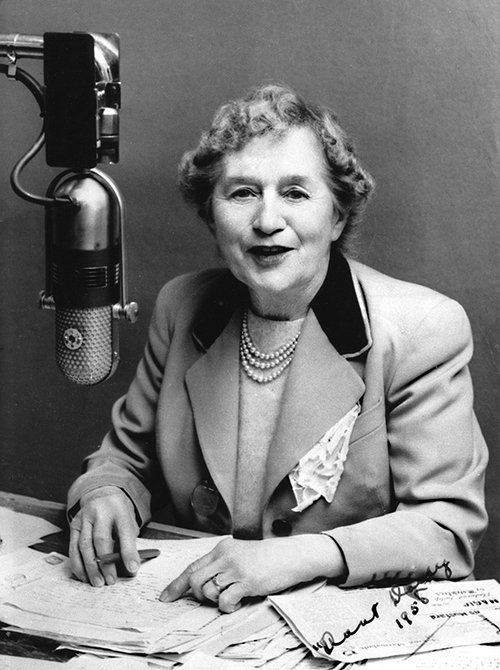
Why should the people of New Zealand not be allowed to hear the best things going? – Professor Robert Jack (1921).
This November marks 100 years of radio in Aotearoa. It’s soundtracked our lives for so long and here we take a quick look at some of that history.
The first crackles of voices through the air in New Zealand were heard on 17 November 1921 when Otago University’s Professor Jack made the first radio broadcast, including the popular song “Hello My Dearie”. Jack and his pioneering colleagues recognised the immediacy and intimacy of radio and their audiences responded – picking up listeners from around the country.
Hero image: Basil Clarke recording an incoming broadcast while on 'listening watch' in the control room of station 2YA in Wellington, during WWII.
As a source of both news and entertainment, radio quickly gained a stronghold in the living rooms of the nation. Broadcasts began in Wellington in 1922 and were followed by dozens of stations in towns big and small.
Some historical moments were announced over radio in New Zealand, including a radio address by Prime Minister Michael Joseph Savage at the outbreak of World War II. It was broadcast by the National Broadcasting Service on YA stations, on 05 September 1939.
Though recordings of waiata by Ōtaki Māori College aired on Wellington stations in 1927, it wasn’t until the 1940s that regular te reo Māori broadcasts began. Later hosts like Ted Nepia and Selwyn Muru were prominent in the revitalisation of the language. Through Te Whakaruruhau o Ngā Reo Irirangi Māori, Iwi Radio Network, there are now more than 20 iwi stations across Aotearoa.
Listen to Ted Nepia presenting Te Reo o te Maori which aired on 04 January, 1970.

Aunt Daisy (Maud Ruby Basham) in the Studio (Ngā Taonga Sound & Vision Documentation Collection)
State control of the wireless was broken in 1966 by Radio Hauraki and their pirate station – broadcasting from offshore Auckland. This connected audiences with popular and alternative music, and led to an increase in options on the airwaves. Their first breakfast broadcast aired on 05 December, 1966.
The diversity of voices being transmitted has only increased and includes the Community Access Media Alliance network, ethnic and student stations, pop, classical and talkback. Our ability to tune in has also increased through internet streaming.
Whatever you listen to, it’s a happy 100 years to radio in New Zealand!
For more on this subject, listen to 'Voices in the Air: Sarah Johnston on 100 years of radio' on RNZ and also check out our Radio and Sound Collection.
Sources for this item include 'Voices in the Air', by Peter Downes and Peter Harcourt.
